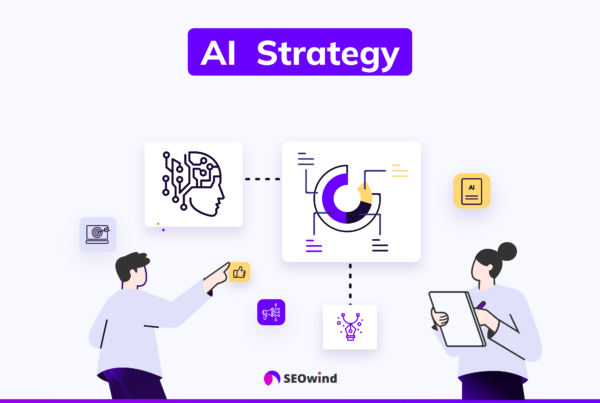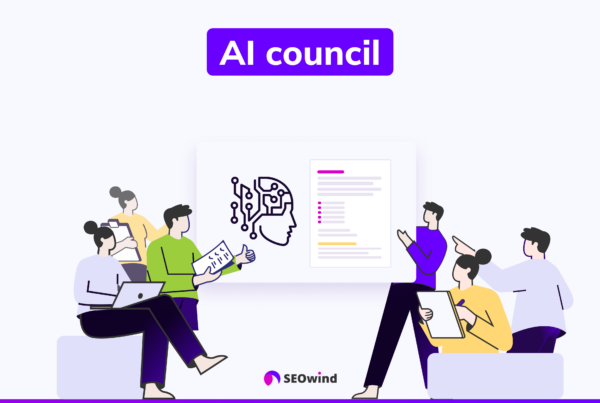A solid plan for creating and distributing high-quality content should be at the top of every marketer’s priority list. But how exactly can you build an effective content plan that meets your business objectives while engaging your audience? This comprehensive guide will walk you through developing a results-driven content plan for 2025 and beyond.
What is a Content Plan?
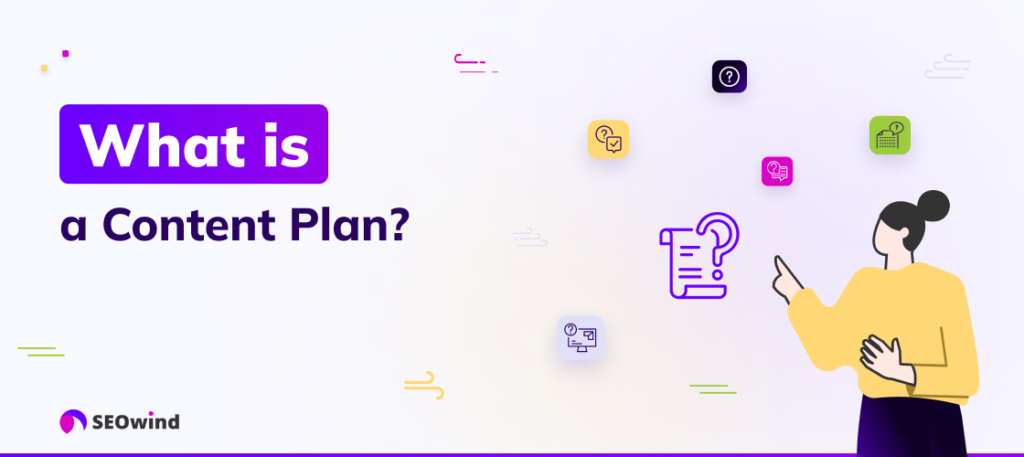
A content plan is a strategic roadmap detailing your brand’s content creation and distribution efforts. It outlines goals, target audience, themes, topics, formats, channels, and publishing frequency. Think of it as a blueprint for all your upcoming content marketing projects.
Creating a robust content plan involves multiple steps, from setting goals and researching your audience to crafting high-quality content for each platform. When done right, it raises awareness about your products or services, builds customer relationships, and boosts leads and sales. A well-crafted content plan is the backbone of any successful online marketing strategy.
Benefits of Creating a Content Plan
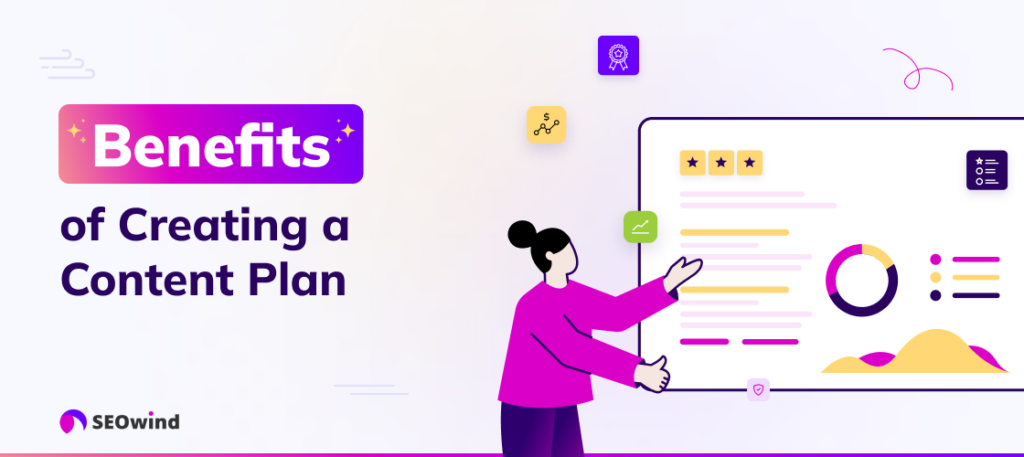
Content planning is essential to marketing success, enabling brands to drive real results. Let’s look at the main benefits.
Organization and Efficiency
Creating a content plan allows for better organization and increased efficiency in your workflow. Through A content plan helps you get organized and work more efficiently by:
- Mapping out your content schedule weeks or months ahead
- Aligning content with key business events and goals
- Identifying what resources you’ll need beforehand
- Making sure each piece serves a specific purpose
This approach saves you valuable time by eliminating confusion about what to publish when and avoiding last-minute scrambles for ideas.
Achieving Goals
AA solid content plan significantly contributes to your business goals. Content marketing generates 3x as many leads as outbound marketing while costing 62% less, showing how efficient it can be for:
- Building brand awareness through consistently sharing engaging content
- Generating leads and sales with targeted calls-to-action
- Keeping customers coming back with helpful content
Connecting each piece of content to specific objectives ensures measurable outcomes that boost your ROI.
Engaging Audiences
Competition for people’s attention is fierce these days. A good content plan helps you tackle this challenge by letting you:
- Tailor messages specifically for your target audience based on real data
- Deliver different types of content for various consumption preferences
- Start thought-provoking conversations with your followers
- Test different topics to see what resonates best
Creating captivating content builds lasting connections with your audience and encourages them to keep coming back, ultimately driving the results you want.
2025 Content Trends You Should Incorporate
A lot has changed recently. So, before showing you how to create a content plan, let’s see what trends shape it.
AI-Powered Content Creation and Optimization
Artificial intelligence has revolutionized content marketing, with 81% of B2B marketers now using generative AI tools, up from 72% last year. The most successful teams aren’t replacing human creativity but amplifying it:
- Use AI for research, outlines, and first drafts while adding human expertise, stories, and insights
- Implement AI tools to personalize content for different audience segments
- Use AI to analyze data and find content gaps and opportunities
- Create workflows that maintain your brand voice while speeding up production
Despite early concerns, only 19% of businesses report lower-quality content from AI tools. The key is developing intelligent workflows where AI handles repetitive tasks while humans focus on strategy, voice, and authenticity.
Video Content Dominance
Video continues its meteoric rise as the preferred content format, with 90% of marketers using short-form video planning to increase or maintain investment this year. The approach for 2025 focuses on:
- Creating videos specifically designed for each platform rather than one-size-fits-all content
- Embracing authentic, behind-the-scenes content instead of overly polished productions
- Adding video to traditionally text-based platforms and content types
- Using short videos for brand awareness while creating longer videos for education and conversion
See how Duolingo transformed its TikTok strategy by giving its mascot a fun personality and joining platform trends. This creative approach has driven millions of views and created an almost cult-like following.
Trust-Building and Educational Content
Content goals are shifting toward relationship-building, with 80% of content marketers reporting brand awareness as their primary goal and 72% focusing on building credibility and trust. This means:
- Creating comprehensive educational resources that genuinely help your audience
- Developing transparent content that shows your brand values and practices
- Featuring real customer stories and case studies
- Addressing current challenges and trends (73% of marketers say this is important)
Educational content that helps people solve real problems while positioning your brand as a valuable resource rather than just a product promoter is most effective today.
Questions to Ask When Developing a Content Plan
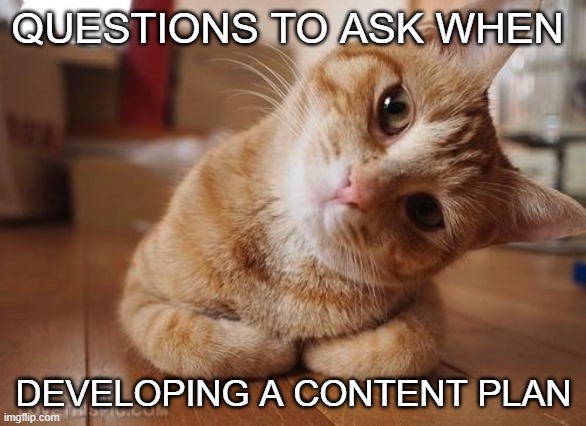
Before creating your plan, explore these fundamental questions that give you a solid foundation.
What are the Goals of the Content Plan?
Setting clear goals should be one of your first steps. Some common content planning goals include:
- Increasing brand awareness
- Driving more website traffic
- Engaging with new or existing customers
- Generating leads or sales
- Establishing yourself as an industry authority
Remember that goals should be SMART: specific, measurable, achievable, relevant, and time-bound.
Who is the Target Audience?
Understanding your target audience is critical. Look at these factors when defining them:
- Demographics: age, gender, location, income level
- Psychographics: interests, values, opinions
- Needs and pain points: problems they need solved
- Online behaviors: how they search, what platforms they use, how they consume content
Accurately identifying your audience through detailed buyer personas helps you tailor content directly for them.
What Type of Content Will Be Used?
A successful plan includes diverse material to keep audiences engaged throughout their customer journey. Popular content types include:
- Blog posts: in-depth articles addressing relevant topics
- Social media updates: shorter posts designed to spark conversation
- Infographics: visual presentations of complex data
- Videos: informative or entertaining content (both short and long-form)
- E-books and whitepapers: comprehensive material for thought leadership
- Podcasts: audio content providing interviews or insights
Choosing the most effective types depends on your audience’s preferences and specific goals.
What Platforms Should be Used for Distribution?
When choosing where to distribute your content, consider:
- Which formats work best on each platform
- Where your target audience spends their time
- How each channel helps meet your specific objectives
Research shows that using multiple channels maximizes results by creating more touchpoints with your audience. 93% of B2B marketers plan to develop a content marketing strategy, with a growing focus on omnichannel distribution.
How to Create a Content Plan: Step-by-Step Guide
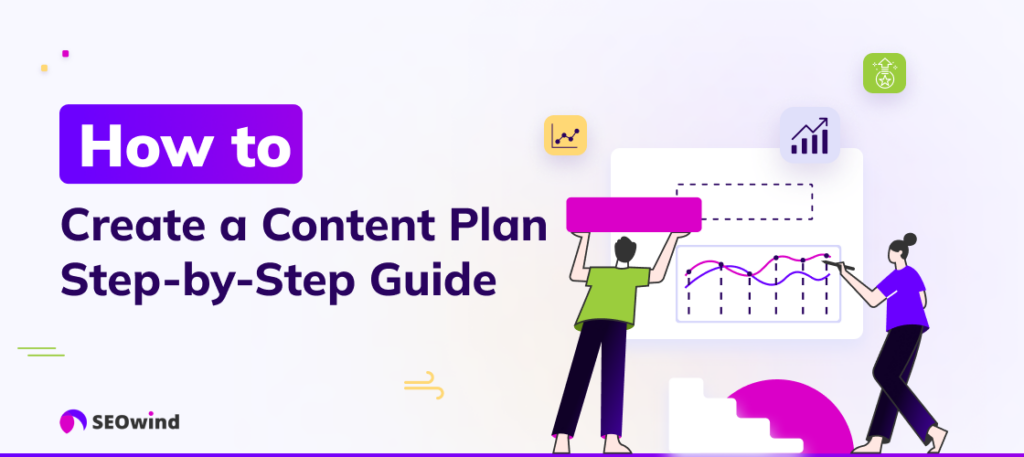
Step 1: Set Goals & Objectives
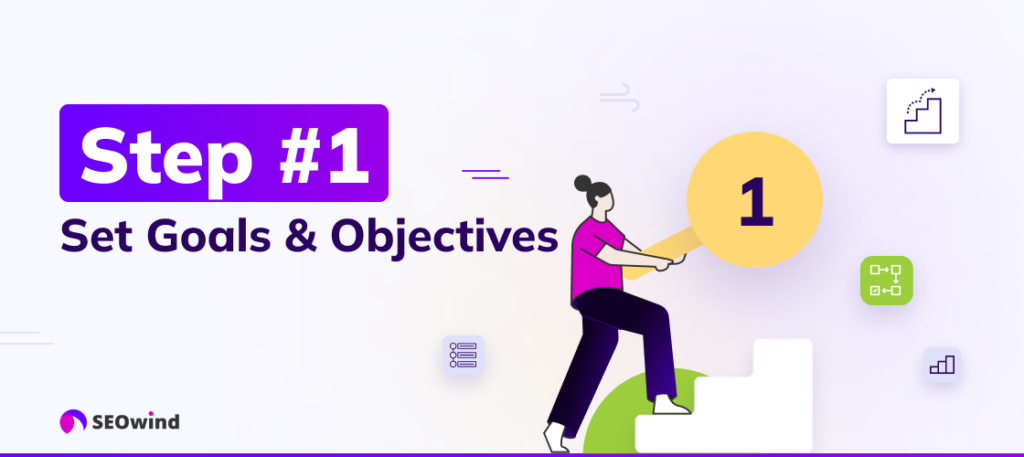
The first step in proper content planning is defining your goals and objectives. Consider what you want Define what you want your content plan to achieve, such as:
- Generating leads
- Building brand awareness
- Increasing website traffic
- Engaging and retaining customers
Make sure these goals are SMART (specific, measurable, attainable, relevant, and time-bound).
Don’t create content to fill a calendar. With 67% of marketers reporting generating business demand or leads from content marketing (up 7% from last year), each piece should serve a clear business purpose. Focus on keywords related to your products and services, especially those that work well for middle and bottom-of-funnel content that guides users toward conversion.
Step 2: Research Your Audience
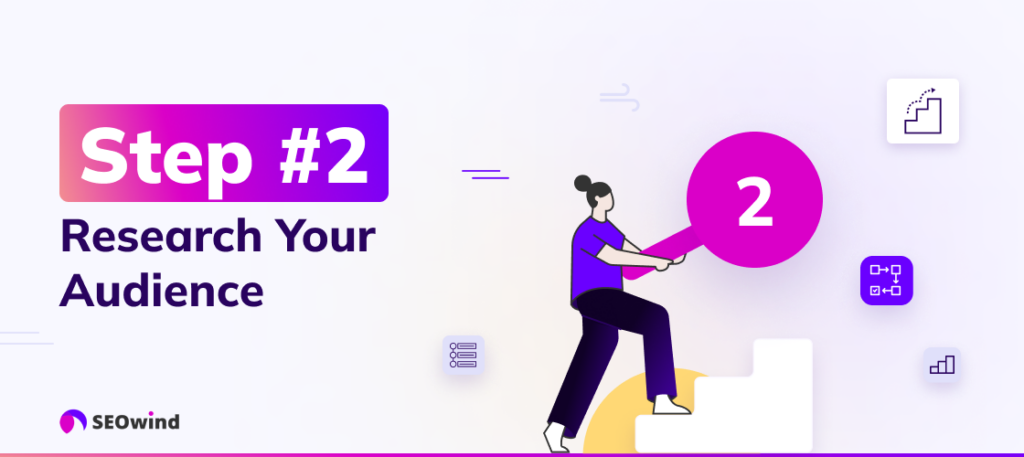
Understanding your target audience is crucial for creating a content plan that resonates with them. Invest Understanding your target audience is crucial. Develop detailed buyer personas using:
- Surveys and questionnaires
- Customer data analysis
- Social listening
Also, map your audience’s journey from awareness to advocacy, and match content to each stage. This ensures you’re not just grabbing attention but guiding users toward conversion and retention.
Step 3: Brainstorm Ideas and Themes
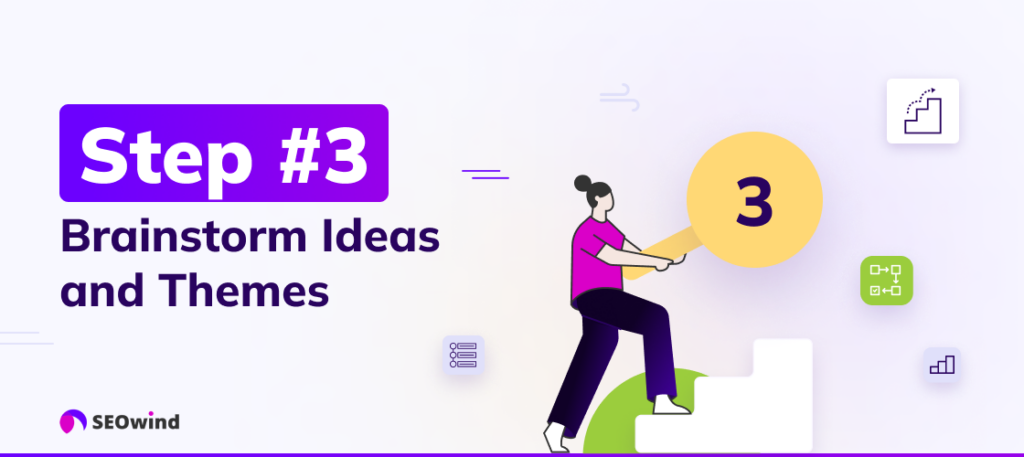
Once you know your target audience, brainstorm ideas for blog posts, videos, infographics, or any other With solid research in hand, brainstorm ideas for various content types. Three ways to start:
- List industry topics or trends your audience cares about
- Address common questions related to those themes
- Identify problems that need solving
Looking at what’s working for your competitors can provide valuable insights. Focus on topics where you can add unique value or perspective. If you can’t add something new to the conversation, it might not be worth pursuing.
Step 4: Conduct Content Research
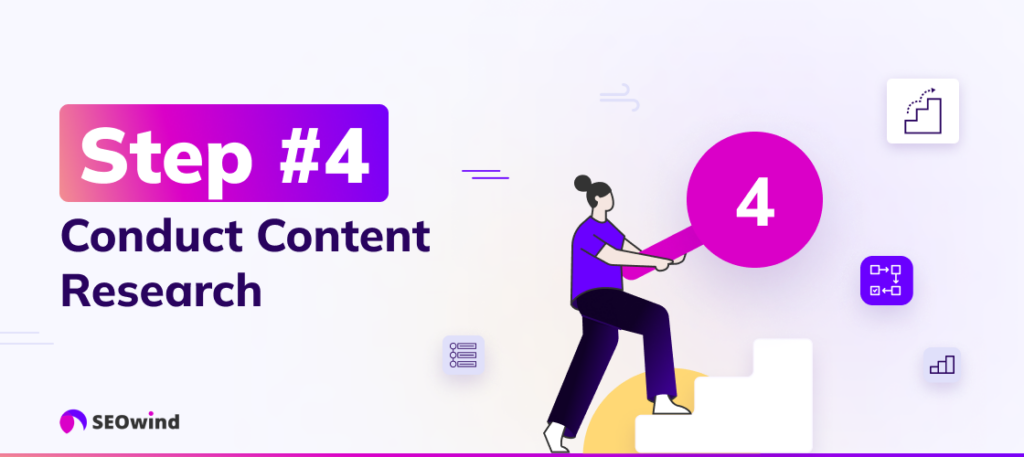
Gather solid research:
- Analyze how your audience searches and identify patterns
- Study what your competitors are publishing to find gaps
- Identify key industry trends
- Do thorough keyword research
- Examine search intent behind keywords by studying SERPs
- Review how top-ranking content is structured
- Check platforms like Reddit and Quora for real questions people ask
- Use Google Search Console to see how your current content performs
This mix of data and qualitative research builds the foundation for smart content decisions. 73% of marketers say content that addresses current challenges and trends is essential, making thorough research critical.
Step 5: Decide on Your Content Mix & Formats
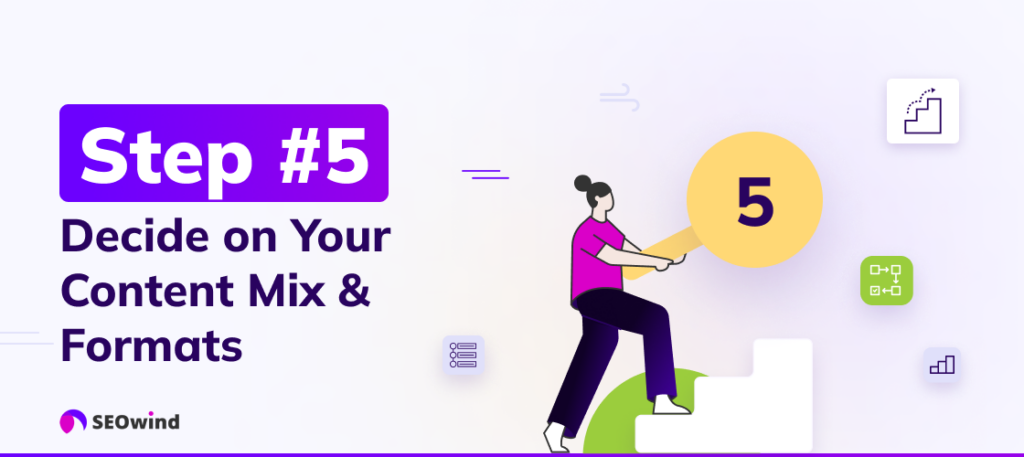
Determine the right mix of formats based on what your audience prefers:
- Blog posts
- Videos
- Podcasts
- Infographics
- E-books
83% of marketers found that creating higher quality content less often is far more effective than publishing lower quality content more frequently. Consider which formats work best at different customer journey stages – detailed guides might work better for consideration stages. At the same time, quick tips could be ideal for awareness.ement across different platforms.
Step 6: Decide When You Will Post
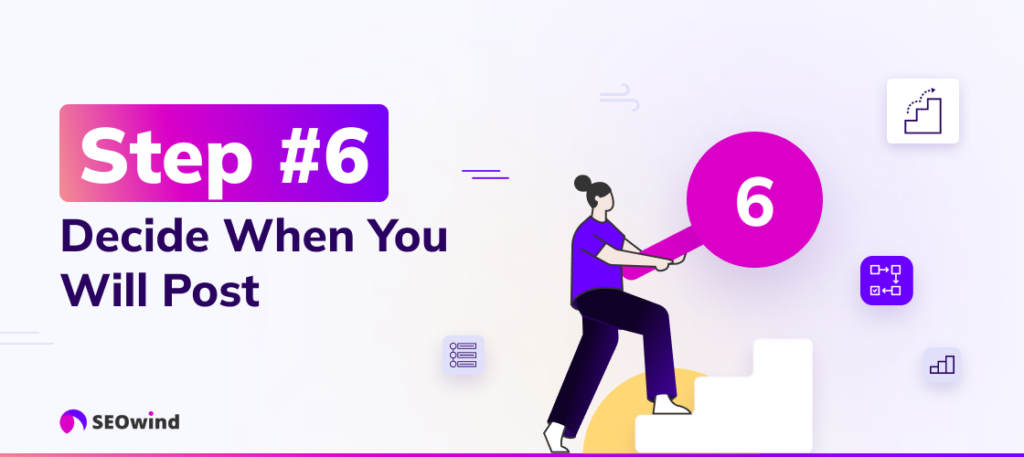
Creating a schedule for your content is essential for maintaining consistent output. Consider factors that might influence posting frequency:
- The time it takes to create different types of content (blogging vs video production)
- Availability of resources (team members, budget)
- Peaks in audience engagement
Once you determine an adequate frequency, establish deadlines and communicate them with all team members involved in the content creation process. This will keep everyone accountable and ensure timely deliverables.
Step 7: Create a Content Calendar
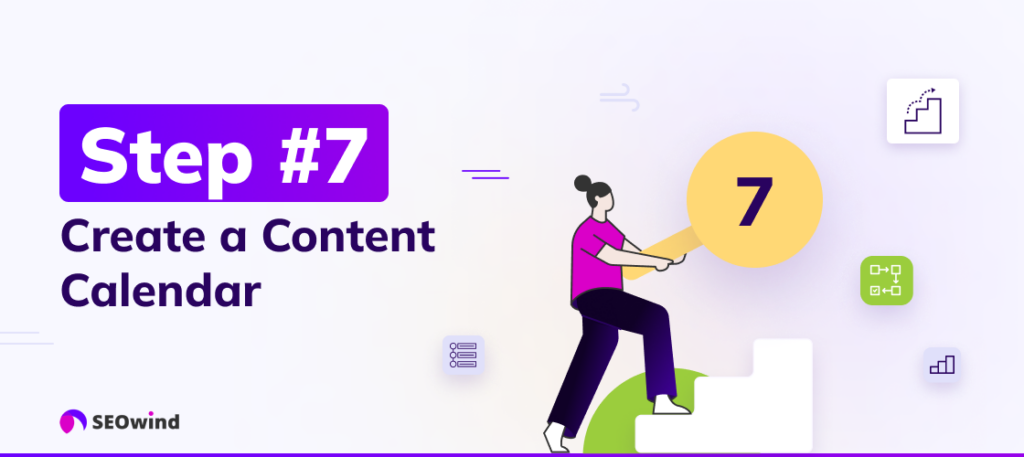
A content calendar helps you organize, schedule, and track content across platforms. Creating one lets you visualize your strategy and ensure it aligns with your goals.
Steps to create an effective calendar:
- Choose a suitable format (digital or physical)
- Organize by week or month
- Include important dates like product launches
- Schedule posts for each platform
- Update regularly to adapt to new ideas and trends
Consider structuring content around topic clusters that build your authority in key areas. Start with core themes and branch into related subtopics, creating internal linking opportunities.
Step 8: Assign responsibilities
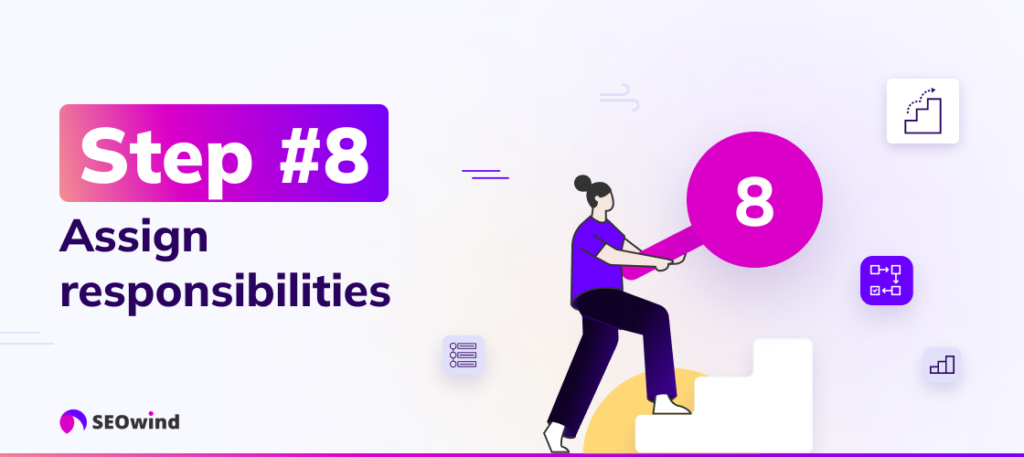
To ensure the efficient execution of your content plan, assign clear roles and responsibilities to team members. This includes content creation, design assets development, editing, proofreading, distribution of materiTo ensure efficient execution, assign clear roles and responsibilities:
- Content creation
- Design assets development
- Editing and proofreading
- Distribution across channels
- Performance monitoring
This creates accountability, encourages collaboration, and helps track progress. Don’t hesitate to outsource content tasks if needed.
Step 9: Develop Your Content
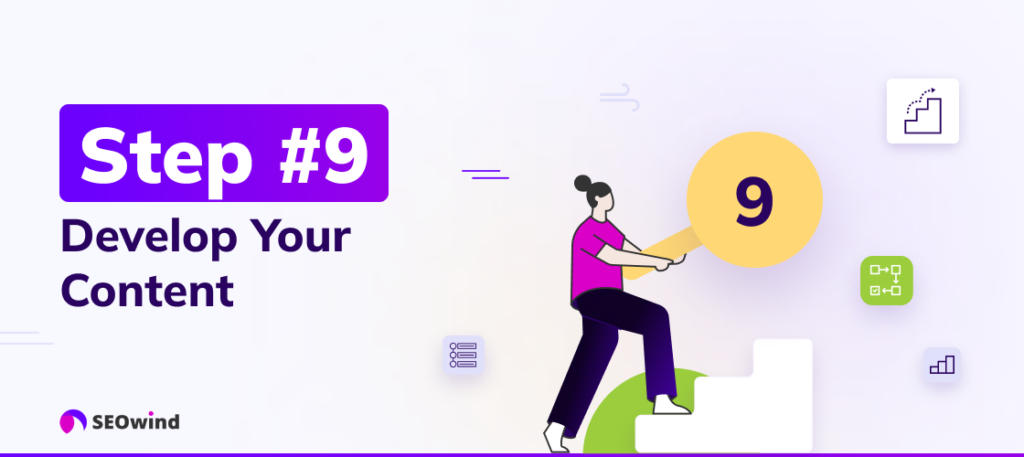
When developing content, create material that connects with your audience and achieves your goals.
If using AI to help generate content, remember it’s just a starting point, not the finished product:
- Add your unique expertise, stories, and insider knowledge
- Infuse personality, anecdotes, and fresh perspectives
- Fact-check all claims and statistics
- Revise language to match your brand voice
- Get to the point quickly to earn readers’ trust
The human edit transforms generic content into something worth reading. Your expertise will make your content stand out from competitors using similar tools.
Step 10: Create (or source) design assets
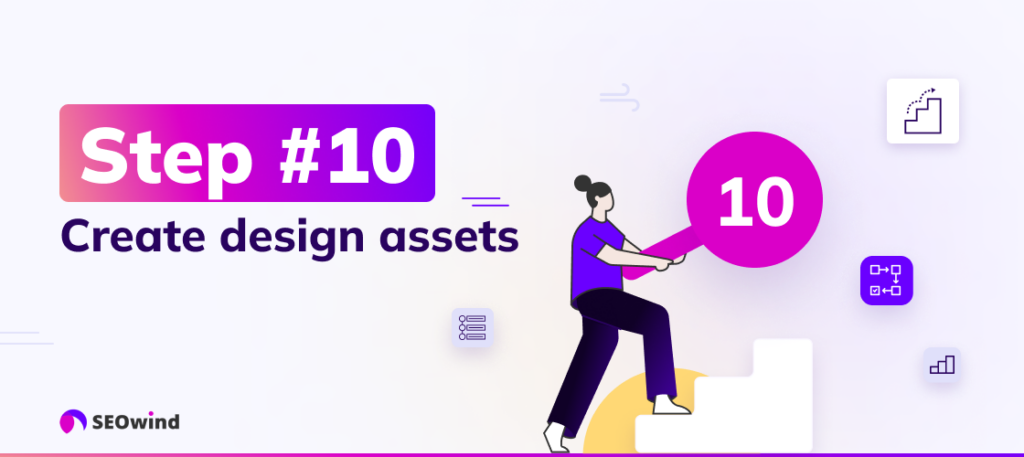
Visual elements engage audiences better than text alone. Create or source attractive design assets that:
- Align with your brand identity
- Communicate information efficiently
- Capture audience attention
94% of marketers say personalized content boosts sales, highlighting the importance of tailored visuals that connect with your specific audience..
Step 11: Promote & Distribute Your Content
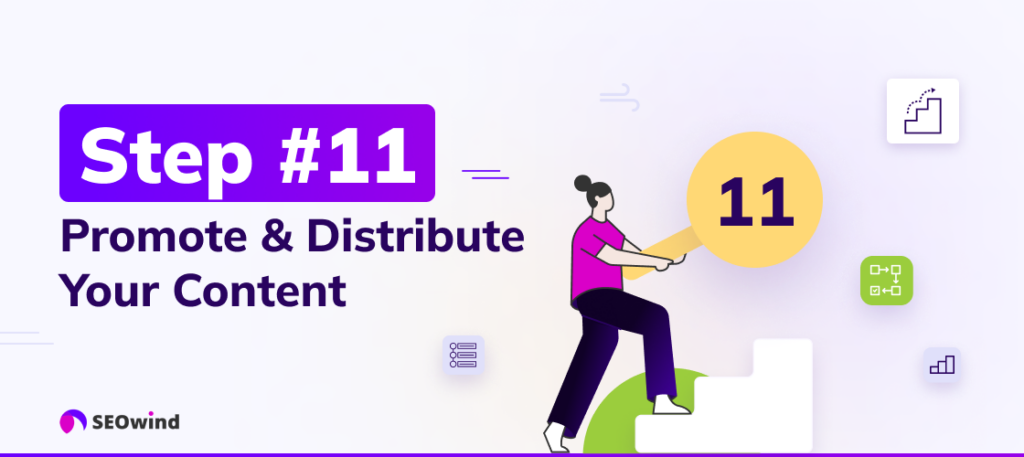
Execute your distribution strategy across appropriate channels:
- Social media accounts
- Blogs
- Email newsletters
- Podcasts
- Video platforms
Promote content according to your plan:
- Boost posts on relevant platforms
- Collaborate with influencers or industry experts
- Repurpose long-form content into smaller pieces
Think about how each piece fits into your broader content ecosystem. Use internal linking to guide users deeper into your funnel and reinforce key topics.
Step 12: Monitor & Analyze Performance
After launching your strategy, gather data and analyze how it’s performing. 81% of marketers evaluate their content initiatives’ effectiveness, mainly using website traffic (86%) and email/website engagement (83%) as metrics.
Track these key performance indicators:
- Traffic (organic, direct, referral)
- Engagement metrics (likes, shares, comments)
- Conversion rates and leads generated
- Time on page and bounce rates
- New users vs. returning visitors
Based on industry benchmarks, set realistic targets:
- Email open rates: Aim for 15-25% depending on industry
- Blog post engagement: Target 2-3 minutes average time on page
- Social media engagement: Shoot for a 1-3% engagement rate
- Conversion rates: Establish baselines of 2-5% for content-driven conversions
Your content plan should evolve based on what the data tells you. Be willing to double down on what works and fix or retire what doesn’t. to refine your approach to create a more successful ongoing content plan that brings results over time.
Case Studies: Content Planning Success Stories
To show effective content planning in action, here are three recent success stories:
Duolingo’s TikTok Transformation
Duolingo revolutionized its content strategy by turning its owl mascot into a comedic, trend-savvy TikTok personality instead of sticking with traditional educational content.
Approach and Tactics:
- Gave their mascot a distinct, bold personality
- Jumped on platform-specific trends and humor
- Published consistent short-form videos, participating in trending challenges
- Actively engaged with followers in comments
Results:
- Generated millions of organic views
- Built a cult-like following, especially among younger audiences
- Significantly increased brand awareness across demographics
This case shows how creative, platform-appropriate content planning can drive exceptional organic engagement.
The Milk Road’s Edutainment Newsletter
The Milk Road tackled complex cryptocurrency topics through a daily newsletter that mixed education with entertainment.
Approach and Tactics:
- Used humor, memes, and relatable analogies
- Kept a conversational tone, making crypto approachable
- Added referral incentives to boost organic growth
- Delivered consistent, valuable content on a predictable schedule
Results:
- Grew to over 250,000 subscribers rapidly
- Developed a highly engaged readership
- Successfully monetized and eventually sold the newsletter brand
This example shows how consistent, value-driven content delivered in an engaging format can quickly build a substantial audience even in complex subjects.
Dove’s “Real Beauty” Digital Campaign
Dove refreshed its iconic “Real Beauty” campaign for digital platforms to challenge beauty stereotypes through inclusive content.
Approach and Tactics:
- Featured diverse women in authentic storytelling across platforms
- Amplified user-generated content via social media
- Launched digital workshops encouraging personal beauty stories
- Created consistent messaging across multiple content formats
Results:
- Deepened global brand loyalty, with Dove’s sales rising from $2.5 billion to over $4 billion within the first three years
- Increased engagement across digital channels
- Reinforced brand positioning as an advocate for authenticity
These examples show how thoughtful content planning with clear goals, audience understanding, and consistent execution drives meaningful business results.
How to structure a content plan
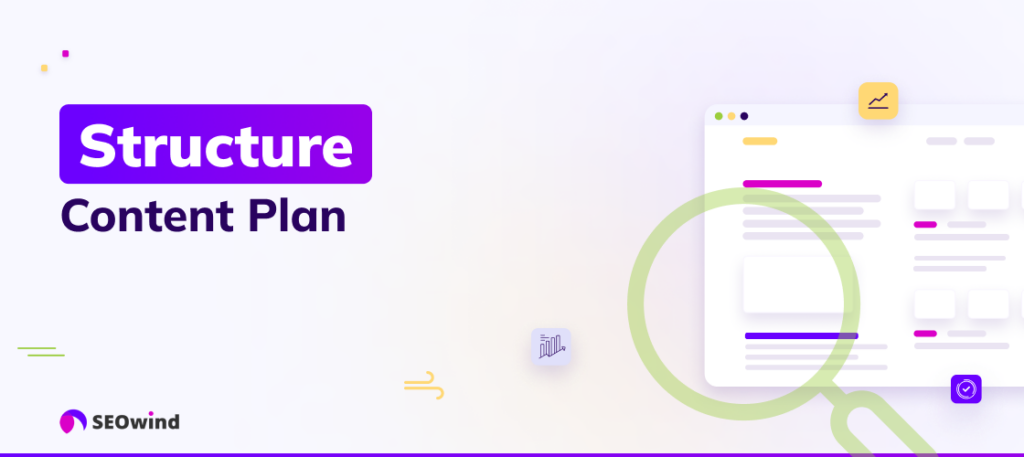
Structuring a content plan is essential for staying organized and efficient. Include these key components:
Executive Summary
Highlight your goals, targets, main messages, and purpose. This concise section introduces your strategy to stakeholders.
Goal Setting
Establish specific objectives aligned with business goals. These include increasing traffic, boosting brand awareness, generating leads, and educating readers.
Target Audience Definition
Define and segment your audience based on relevant criteria. Understanding who you’re creating content for enables tailored messaging that resonates.
Elements to include:
- Detailed persona profiles
- Customer journey mapping
- Audience language preferences
Content Themes & Topics
Identify themes related to audience needs and business objectives. Consider:
- Industry news and trends
- Solutions addressing customer pain points
- Inspirational stories or case studies
Content Formats
Decide on optimal formats for your audience – blog posts, videos, podcasts, infographics, or social media updates.
Design Assets
Plan visual elements that complement and enhance your content, considering brand consistency and audience preferences.
Platform Selection
Choose distribution platforms suitable for delivering different content types to your target audience.
Editorial Calendar
Develop an editorial calendar outlining publication schedules while considering seasonality and promotional opportunities.
Resources & Responsibilities
Clearly outline roles and allocate responsibilities within your team, assigning specific tasks with deadlines.
Promotion Strategy
Plan how to promote each piece using email marketing, social media, or native advertising. Establish a promotional budget aligned with objectives.
Measurement & Analysis
Establish KPIs to track effectiveness against goals. 81% of marketers assess content effectiveness, primarily using Google Analytics (64%), Social Media Analytics (44%), and SEO tools (34%).
Use AI in Your Content Planning Process
While AI was briefly mentioned earlier, its growing importance in content planning deserves special attention for 2025.
AI as a Research and Ideation Partner
AI tools can dramatically speed up the research phase of content planning:
- Use AI to analyze competitors’ content at scale, finding gaps and opportunities
- Generate topic clusters around your primary keywords
- Analyze search intent patterns across your topic area
- Identify emerging questions and trends in your industry
Start by feeding AI tools your existing research, competitor content, and audience insights. Then ask targeted questions to expand your thinking rather than replacing your expertise.
Combining Human Expertise with AI Capabilities
The most successful content strategies in 2024 find the right balance between AI efficiency and human creativity:
- Use AI to create first drafts or outlines, then enhance with your unique expertise
- Apply human oversight for fact-checking, voice consistency, and adding proprietary insights
- Let AI handle content personalization at scale while humans design the strategy
- Use human creativity for breakthrough ideas and AI for implementation and optimization
85% of marketers believe generative AI will transform content creation. Still, the winners aren’t those who replace humans – they’re those who create effective human-AI workflows.
Quality Control for AI-Assisted Content
When incorporating AI into your content planning, implement these quality control measures:
- Establish clear brand guidelines for AI usage
- Create detailed prompts that specify tone, audience, and purpose
- Implement a human review process for all AI-generated content
- Fact-check all statistics and claims generated by AI
- Add unique perspectives and insights that only your brand can provide
Tips for Creating an Effective Content Plan
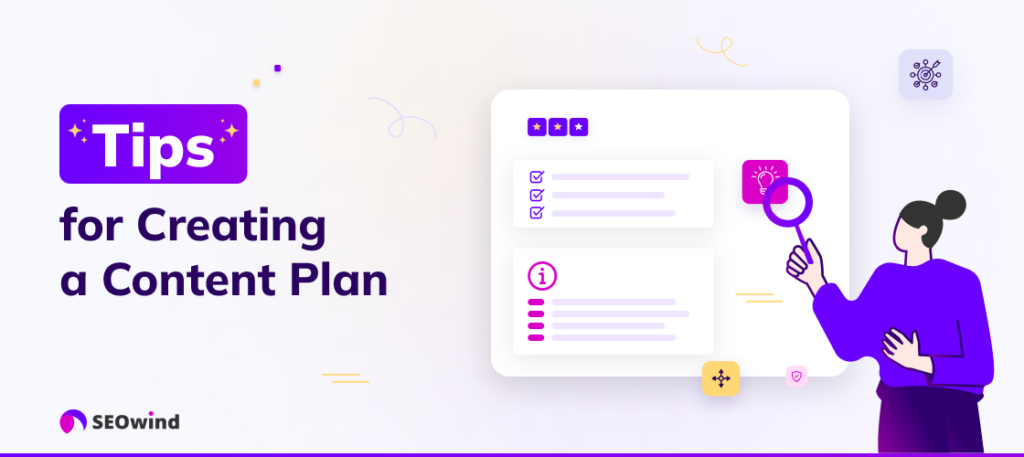
Here are three essential tips that can help give you an edge in creating a successful plan.
Be Consistent with Your Brand Message
Maintaining cohesive branding throughout your content creation process is the key to building recoKeep your branding cohesive throughout your content:
- Maintain a consistent tone and voice that aligns with your brand identity
- Use consistent visual elements that reflect your brand
- Stick to themes that resonate with your audience
Be specific about sentence structure, vocabulary, tone, and stance when defining your brand voice. The more precisely you define voice guidelines, the more consistent your content will be.
Focus on Quality Over Quantity
Focus on Quality Over Quantity
Prioritize quality over quantity in your content plan. Hubspot claims 83% of marketers found that publishing higher-quality content less often is more effective than publishing lower quality content more frequently.
Instead of pumping out mediocre posts:
- Add genuine value that addresses customer pain points
- Invest time in thorough research using reputable sources
- Allocate resources for quality editing
- Implement SEO best practices without compromising readability
One exceptional piece that helps your audience will outperform dozens of mediocre pieces.
Include Visuals in Your Content
Visuals significantly impact attention, understanding, and retention. Include:
- Eye-catching photographs that complement your text
- Infographics that transform complex data into digestible formats
- Custom illustrations representing intricate concepts
- Video clips to break up text and boost engagement
Tools to Help You Create a Content Plan
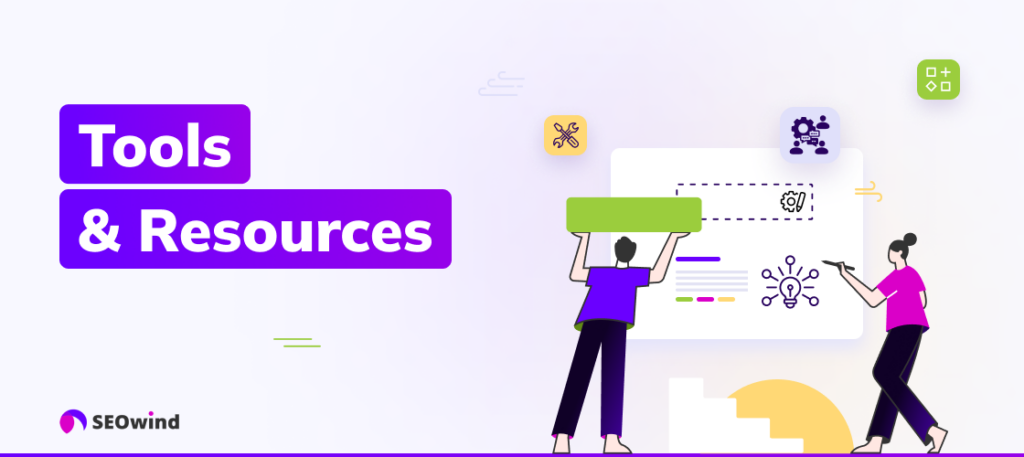
Various tools can streamline content planning and ensure success.
Content Management Systems (CMS)
A Content Management System (CMS) organizes and updates website content while streamlining publishing:
- WordPress: As one of the most widely-used platforms globally, WordPress offers countless themes, plugins, and resources that cater to all levels of expertise.
- Drupal: Drupal is another popular open-source CMS solution known for its scalability and flexibility in handling complex projects.
- Joomla: Known for being user-friendly with robust features, Joomla is suitable for small businesses and individual blogs alike.
- Wix: A web-publishing platform attractive to non-technical users due to its drag-and-drop functionality and visually appealing templates.
Social Media Management Tools
These tools help you manage multiple platforms efficiently:
- Hootsuite: It enables scheduling posts across different platforms, monitoring their performance, engaging with customers, and customizing analytics reports.
- Buffer: An easy-to-use tool that provides scheduling capabilities and posts analytics so you understand which posts yield better results.
- Sprout Social: This feature-rich platform allows post-scheduling across numerous platforms while tracking engagement metrics and reporting functionalities.
Leveraging these tools ensures consistent distribution while making it easier to manage growth as part of your content planning strategy.
Analytics Tools
Monitor performance to make informed decisions:
- Google Analytics: This widely-used tool is essential to track website traffic, audience demographics, conversions, and campaign performance.
- Moz: Moz provides insights into competitor strategies and detailed keyword research, making it essential for fine-tuning your content planning process.
- Semrush: Semrush offers various features, from SEO audits, backlink analysis, and keyword research to tracking organic traffic growth.
- Ahrefs: Analytics tool that offers invaluable insights into a website’s backlinks, organic search performance, and content metrics, allowing you to identify opportunities for improvement and growth.
Exploring and utilizing these essential tools, Content Management Systems, Social Media Management Tools, and Analytics Tools, will streamline your content planning process while providing valuable insights for optimizing your plan’s effectiveness.
What Is the Difference Between a Content Plan and a Content Strategy?
While often used interchangeably, content plans and content strategies serve different purposes.
Content Plan: The Blueprint for Execution
A content plan maps out thA content plan maps out specific details of content creation:
- Types of content (blog posts, whitepapers, videos)
- A detailed calendar with publishing dates
- Distribution platforms
- Team responsibilities
- Promotion tactics
The content plan is a blueprint for bringing your broader strategy to life through defined actions.
Content Strategy: An Overarching Framework
A content strategy encompasses the framework driving all content initiatives:
- Brand identity and voice
- Goals and objectives
- Audience personas
- Channel selection
- KPIs for measuring success
A strategic foundation ensures every content development effort remains purpose-driven and relevant.p individual plans remains purpose-driven and relevant for the organization and its target audience.
Linking Strategy and Plan Together
Think of content strategy as your long-term mission statement. In contrast, the content plan serves as specific initiatives to fulfill this mission. The strategy keeps your message consistent while plans outline tactical steps for achieving goals within the broader strategic context.
Craft thoughtful content strategies before developing actionable plans aligned with your long-term objectives. Aligning these components enables consistent brand messaging and drives engagement with your target audience.
